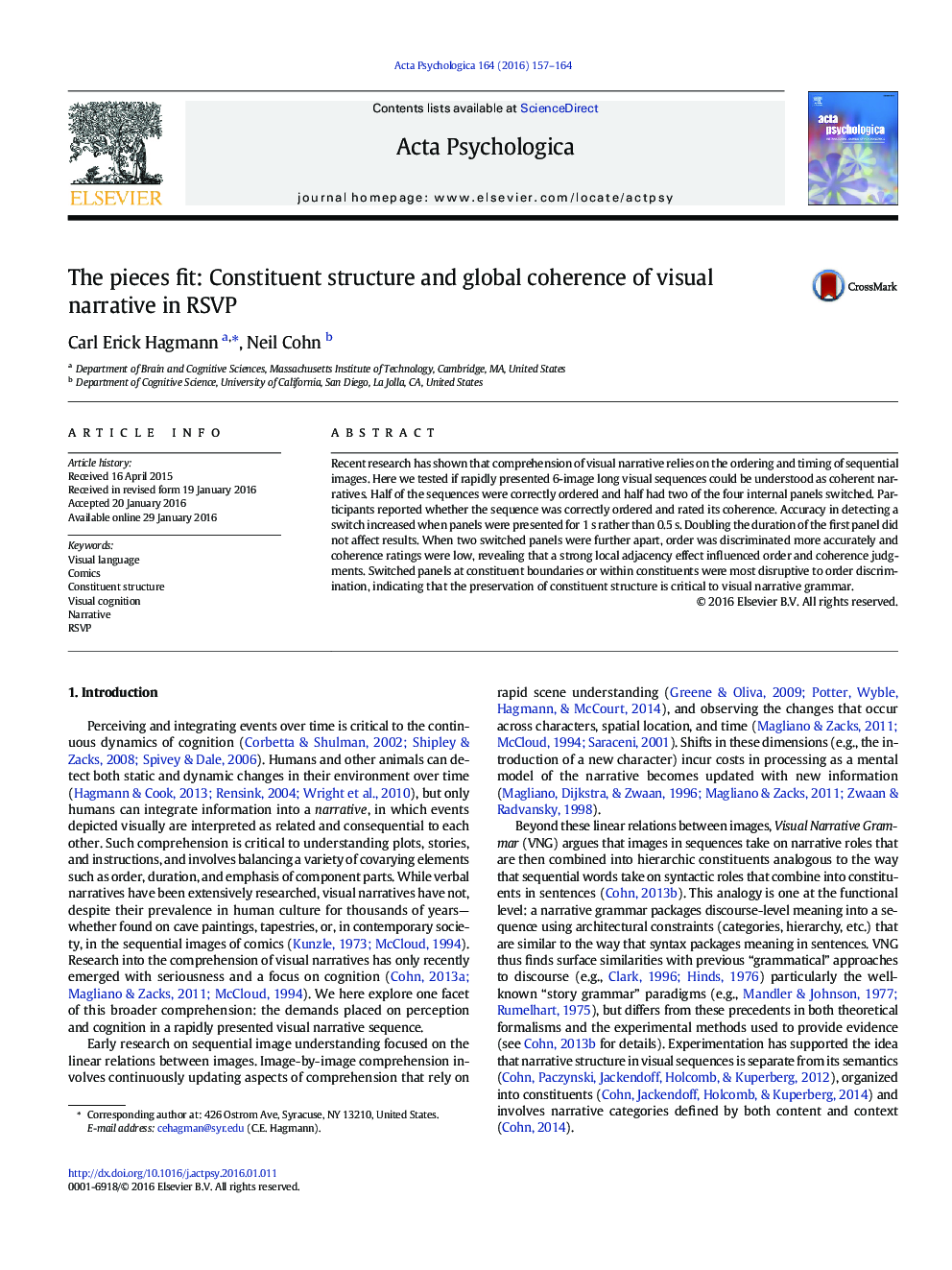| Article ID | Journal | Published Year | Pages | File Type |
|---|---|---|---|---|
| 919669 | Acta Psychologica | 2016 | 8 Pages |
•We tested if rapidly presented 6-image visual sequences could be understood as coherent narratives.•Participants reported whether the sequence was correctly ordered and rated its coherence.•Accuracy in detecting a switch increased when panels were presented for 1 s rather than 0.5 s.•Order was discriminated accurately and coherence ratings were low when switched panels were far apart.•Switched panels at constituent boundaries or within constituents disrupted order judgment.
Recent research has shown that comprehension of visual narrative relies on the ordering and timing of sequential images. Here we tested if rapidly presented 6-image long visual sequences could be understood as coherent narratives. Half of the sequences were correctly ordered and half had two of the four internal panels switched. Participants reported whether the sequence was correctly ordered and rated its coherence. Accuracy in detecting a switch increased when panels were presented for 1 s rather than 0.5 s. Doubling the duration of the first panel did not affect results. When two switched panels were further apart, order was discriminated more accurately and coherence ratings were low, revealing that a strong local adjacency effect influenced order and coherence judgments. Switched panels at constituent boundaries or within constituents were most disruptive to order discrimination, indicating that the preservation of constituent structure is critical to visual narrative grammar.
